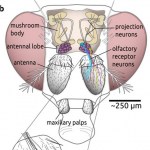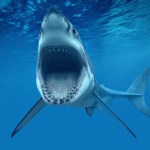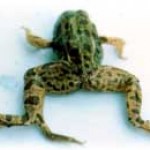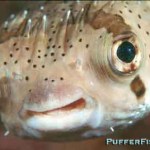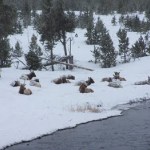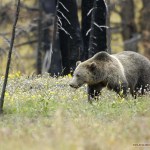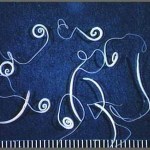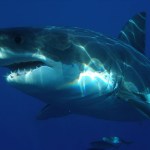Life Science
New research published in Science Reports by Strauch et al., shows that fruit flies can tell the difference between cancerous and healthy cells. The researchers recorded calcium patterns indicative of neuronal activity that was stimulated in response to various odors emitted by healthy and cancerous cells. Because cells with cancer differ metabolically from healthy cells, they emit different volatile compounds that can be detected by olfactory receptor neurons on the antennae of fruit flies. When exposed to breast cancer cells or healthy cells, the flies exhibited different patterns in…
I am very excited to report that the Puerto Rico Physiological Society will be hosting their 4th annual meeting, "Exercise Physiology: From Molecules to Systems" on February 8th.
PRPS 2014 Save the Date
Last year's meeting was focused on mitochondria and was a big success. This year's meeting is shaping up to be similarly successful.
Amazon Prime Air might want to pay attention to this research. Scientists have studied the flight patterns of albatrosses to understand how the animals are able to sustain flight with minimal energy expenditure.
New research provides more evidence of how birds conserve energy by flying in a "V" formation:
Image from www.clker.com. Woodridge, IL, USA --- Great White Shark Opening Mouth --- Image by © Denis Scott/Corbis
Scientists have discovered that great white sharks (Carcharodon carcharias) actually live longer than previously thought (up to 23 years or so). Using radiocarbon age estimates, Dr. Hamady and colleagues at Woods Hole Oceanographic Institution determined the animals can live to the ripe-old-age of 70+ years. These findings mean that great white sharks, like humans, may take longer to mature. It also means that overfishing may pose more of a threat to them than previously…
Frog with an extra foot. Image from the Minnesota Pollution Control Agency.
Image of a frog with a missing leg from the Minnesota Pollution Control Agency.
Since 1995 deformed frogs have been turning up. Call them the canaries in the coal mine for environmental health. Frogs are showing signs of some kind of stress.
So is it a parasite? Pollution? A natural phenomenon? Cannibalism? Fungus? Ultraviolet light? Something in the water?
Video from YouTube
The tap water data referred to in the video in which they placed embryos in tap water collected from different sites in Minnesota…
Image from: The Poo Prejudice | The Arid Land Homesteaders League www.plantfreak.wordpress.com
Okay, here is something rather interesting that I came across today. Scientists have discovered that dogs will align their bodies with the Earth's magnetic field before excretion. What is even more amazing is that the scientists actually observed over 5,000 pee breaks and over 1,800 defecations to come to this conclusion. Their findings suggest that when the magnetic field is stable, dogs will stand in-line with the North-South axis while avoiding the East-West axis. However, when the field…
Image from www.pufferfish.net
It should be noted that the theory of dolphins getting "high" off puffer fish is highly controversial as others have mentioned that tetrodotoxin, the neurotoxin released from puffer fish, is famous for causing paralysis making it more of a poison as opposed to a good time. It is reportedly more potent than cyanide. In fact, a study published in 1990 reported tetrodotoxin as the cause of death of two Atlantic dolphins found dead in a lagoon (Hokama et al., J Clin Lab Anim. 1990).
So what exactly are those dolphins doing with the puffer fish in the BBC…
A new documentary from BBC called "Spy in the Pod" has captured what they claim to be footage of dolphins using puffer fish to reportedly "get high". According to a quote from the Daily Mail, "Zoologist and series producer Rob Pilley said that it was the first time dolphins had been filmed behaving this way." The toxins apparently have a narcotic-like effect on the dolphins.
The "Spy in the Pod" two-part series begins tonight at 8:00pm on BBC1.
Additional source:
Daily Mail
I just read this blog describing the very strange animal moments. Check it out!
http://blogs.scientificamerican.com/running-ponies/2013/12/24/top-ten-s…
Just look at the cute little Tinkerbella fly, a mere 250 micrometers long, that was discovered in Costa Rica:
Imageof Tinkerbella from Scientific American.
Image from: Idaho Nature Notes, http://idahonaturenotes.blogspot.com/2012/01/backyard-deer.html
This was a very good question brought up by a reader of the prior post. As it turns out, deer and elk move between summer and winter ranges. The winter range is at a lower elevation where there are more resources such as shrubs and grasses. Since they eat similar foods, they often compete for resources during the winter when they are more scarce. Since elk are larger and more aggressive, they often win these competitions. According to an article from the University of Idaho, elk are also more…
This was too cute not to share. Here is a video of animals in Blank Park Zoo in Iowa performing their version of a Christmas carol.
Unlike Santa's reindeer living in the lap of luxury at the North Pole, wild reindeer that live in the barren tundra have to find their own food. Being too chilly for trees, the tundra is hospitable to only shrubs, grasses and lichen, which are abundant during the warmer seasons. However, during the winter when the grasses and shrubs are scarce reindeer survive off lichen, comprised mainly of quick-energy in the form of carbohydrates. In fact, they reportedly eat about 4-11 pounds of lichen each day.
Source:
Animal Planet
Could giant freshwater octopuses really be to blame for the many unexplained drownings in Oklahoma's lakes?
Image of a grizzly bear at Yellowstone National Park from http://free-naturewallpaper.com/nature-images/animals/bears/Grizzly-at-…
I was so excited to see a story featuring grizzly bears (Ursus arctos horribilis) in the Wall Street Journal yesterday. The article was about how Dr. Kevin Corbit at Amgen Inc. is studying grizzly bears in the Bear Center at Washington State University to learn more about obesity. The 12 animals living in the facility were either rescued from places where they were captured after getting too close to humans or were born at the facility. Dr. Corbit was quoted in…
Image from www.Nematode.net.Credit: http://www.latech.edu/ans/faculty-staff/liberatos-james-d/parasite-pict…
Believe it or not, scientists at Albert Einstein College of Medicine in collaboration with Coronado Biosciences are intentionally infecting people who have autism with whipworms from pigs (Trichuris suis), although generally considered non-pathogenic to humans.
For some individuals, an elevated inflammatory state contributes to repetitive and irritable behaviors associated with autism. Researchers have observed that allergic responses (measured by skin prick tests) are higher in…
Rescuers have been successful in coaxing some of the stranded pilot whales to deeper waters in the Everglades National Park (Florida). However this success is still marred by tragedy as eleven animals are now confirmed dead.
It is currently unclear why the whales beached themselves. Researchers are exploring many potential reasons including changing ocean currents and water temperatures as well as possible infections with Morbillivirus.
The situation remains tense as the animals that were led to deeper waters may return and end up stranded once again.
I came across this neat "name that animal" quiz. How well do you know your animals? Find out now!!
Click here to take the quiz!
Image of a great white shark from Wikimedia Commons.
Dr. Michael Stanhope from Cornell University has discovered that great white sharks actually share more proteins involved in metabolism and biochemistry in common with humans than zebrafish, a common fish model used in biomedical research. They made this discovery by sequencing the transcriptome of a heart isolated from a great white shark. I find it fascinating that sharks have more proteins in common with mammals than with bony fish, even though sharks and bony fish are not very closely related.
Source:
Cornell University Press
